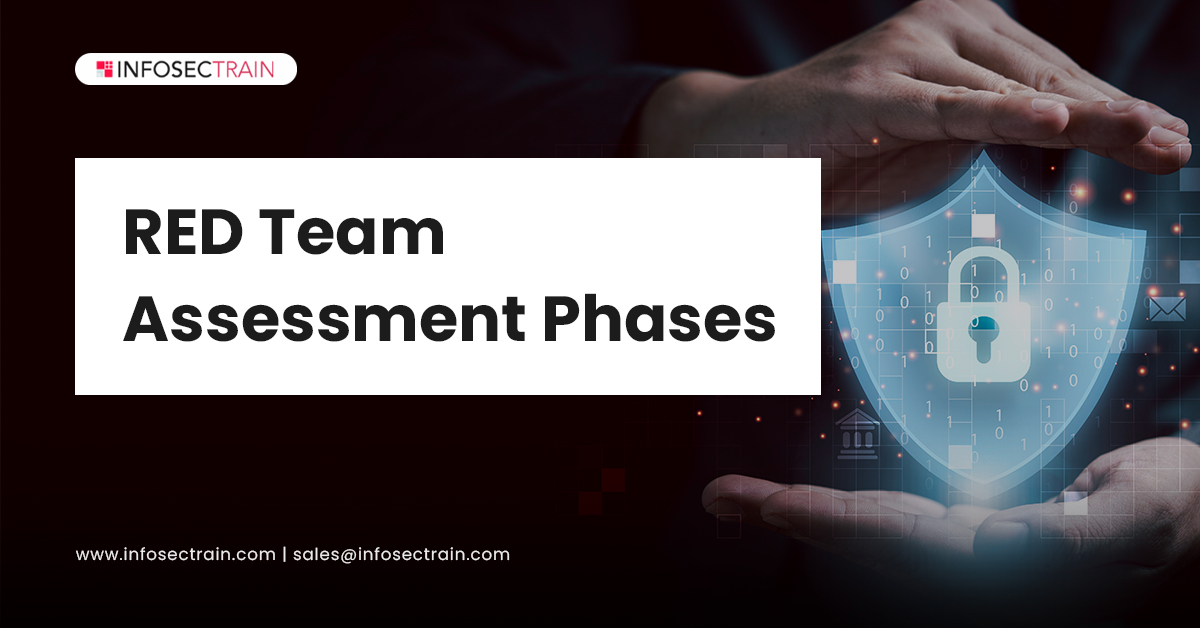Everything You Need To Know About RED Team Assessment Phases
Systems in any organization contain valuable information, and hackers out there are trying to steal your sensitive information. Due to the rise in cyber hazards, organizations are willing to check the vulnerabilities of their systems even before the hacker knows them so that organizations can fix these vulnerabilities and protect their systems, networks, and sensitive information.

So, to check the vulnerabilities, organizations need to think precisely like hackers, and to do so, they hire a group of ethical hackers called the “red team.” These red teams will continuously update themselves with new hacking techniques and tools, to act exactly like new-age hackers and implement their strategies to exploit the organization’s vulnerabilities ethically.
You must be aware of what red teams do, right? Now, let us see how they do it.
Red team assessment phases:
There are seven phases in the red team assessment. Let us see each of them here.
Planning/setting objectives: Planning and setting objectives is the first phase of red team assessment because it is vital to understand what you have to perform. For example, some organizations only need to find vulnerabilities and have no need to try social engineering techniques. And some companies want to see how attackers can exploit the vulnerabilities. And few require all these. So, knowing the objectives is extremely important.
A critical aspect of a red team assessment is ensuring that all the parties involved have the same understanding of the “rules.”
As soon as the ground rules of the assessment have been established, the team can start planning its approach. Certain avenues of attack are more or less promising for certain assessments, depending on the specifics. By creating a rough outline of the assessment in advance, you minimize wasted effort and unintended consequences and facilitate the assignment of roles within the team.
Reconnaissance: Reconnaissance is a phase where an ethical hacker or hacker gathers information about the target. They will try to find out everything about the target without being caught and will stop once they get the needed information like open ports, vulnerabilities, and IP addresses. Since red teams try to stay undetected, they passively perform this step.
Let us see a real-time example and understand why reconnaissance is important.
Assume a thief wants to rob your gold. The first and foremost thing he will do is plan the robbery, which is the first step. And then he will gather all the information, which is reconnaissance, and the information would be how many people will stay in that house, when you go out, how many entries are there to get in. Without this information, he will fail. Right? So, hacking or stealing reconnaissance is very important.
Scanning and enumeration: After the reconnaissance phase, a red team should have a great deal of information about the target’s physical and digital habits and defenses. As part of the target identification stage of the attack, the red team sifts through this information in order to determine potential vulnerabilities and methods of achieving their objectives. During this phase, active information-gathering techniques, including network scanning and enumeration, are also employed. To maximize the chances of success, the team will often identify several different avenues of attack.
Gaining access: This is the stage where the red teams take their first significant step against the organization. In the gaining access phase, the red team exploits the vulnerabilities discovered in the preceding stages to circumvent or surpass the organization’s defenses. This might involve exploiting software flaws, utilizing social engineering against personnel, or circumventing physical fortifications. The phase’s ultimate purpose is to provide the red team with a footing within the target’s defenses that may be expanded to meet the assessment’s objectives.
Maintaining access: As soon as a red team gains access to a system, a primary goal is to maintain the access. Depending on the attack vector, maintaining access using the original connection may be challenging or impossible. So, during this phase, the red team expands and penetrates the target network in order to establish communication channels and persistence mechanisms so they can make sure they have the level and duration of access necessary to accomplish the assessment objectives.
Covering Tracks: The attackers or red teams perform this final phase to rid themselves of any traces of their presence that would be useful for the administrator to identify them.
Reporting: The red teams prepare a report describing what they have discovered in each step, including an analysis of their findings, the vulnerabilities they found, redemption measures and recommendations, as well as a summary of findings for internal sharing.
Red team online training with InfosecTrain
InfoSecTrain is one of the best globally recognized training platforms focusing on Information security services and IT security training. Enroll in our Red Team training course to experience the practical sessions and excellent training from the best trainers.







 1800-843-7890 (India)
1800-843-7890 (India)